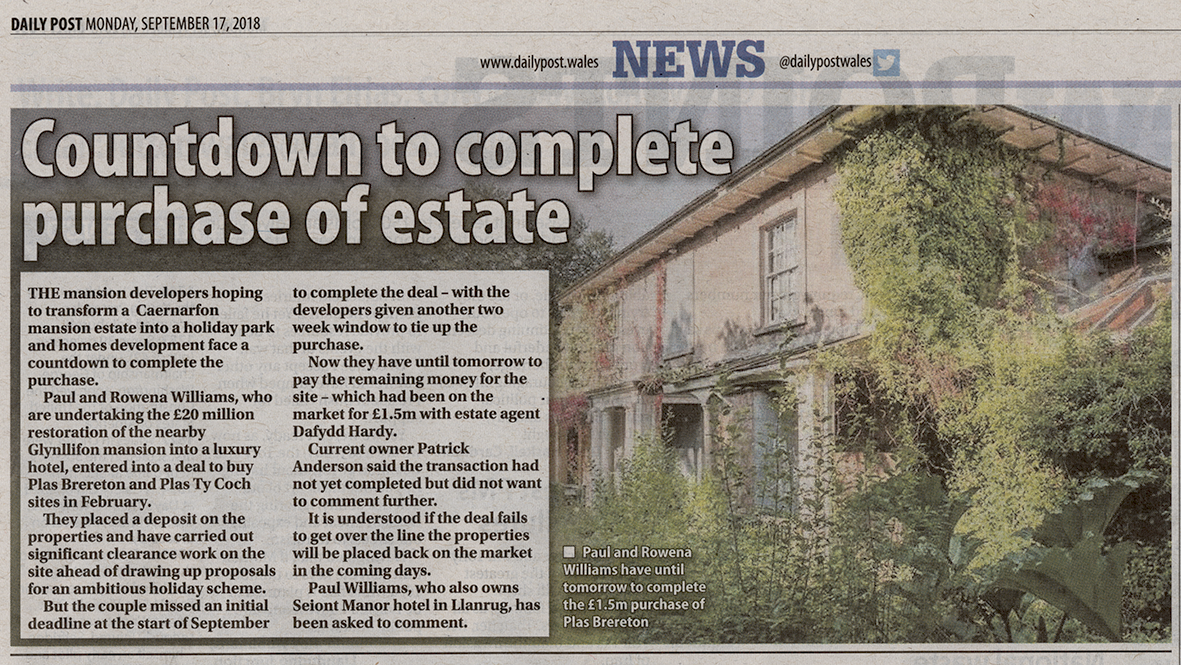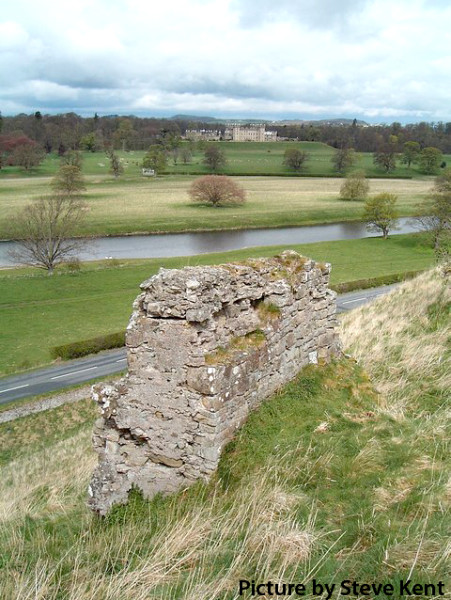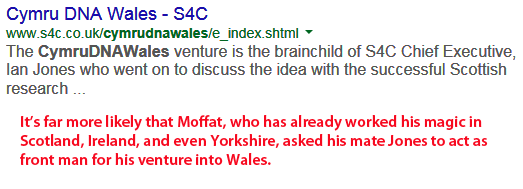Retirement remains the ambition. That said, this post is produced in the hope of drawing attention to developments in one locality that may link with wider, national concerns.
♦
‘Y FOEL’
![]() Today’s piece took wing with the article you see below. It appeared in last Thursday’s Daily Post. A strange piece in a number of ways; not least because the more I read it the less sure I was of what it was trying to say.
Today’s piece took wing with the article you see below. It appeared in last Thursday’s Daily Post. A strange piece in a number of ways; not least because the more I read it the less sure I was of what it was trying to say.
One thing’s for sure – it has little to do with slate landscapes.

To begin with, the article tells us that the land in question ‘lies south of Conwy’. Which indeed it does; but the same could be said of Cape Town. Actually, it’s quite a way from Conwy, but just a few miles east of Blaenau Ffestiniog. So why use Conwy as a reference point?
The proximity to Blaenau is evidenced by the fact that the land we’ll be looking at contains a few old slate quarry workings. Which gave the writer the excuse to tell us that back in the industry’s heyday, ‘Wales was known as “the place that roofed the world”‘. ‘The place’!
Then, there’s the ownership. The opening paragraph talks of the land ‘being brought into the care of National Trust Cymru’. Does that mean the NT has bought the land? Is it merely looking after the land?
Finally, another possible cause of confusion are the references to ‘Y Foel’. The area we’re looking for is actually, and variously, called, ‘Foel Marchyrau’, ‘Foel Marcherau’, or even – according to the Land Registry – ‘Moel Marchyria’. Whatever you choose to call it, this area lies not far from the hamlet of Cwm Penmachno.
So who wrote the piece?
Well, it wasn’t anyone at the Daily Post. The article came from the National Trust’s website. Here’s the link. It’s a sad indictment of our media when a full-page news story turns out to be a copy and paste job.
◊
THE TREASURY TAKETH AWAY AND THE TREASURY GIVETH
I suppose my interest was piqued when I read, in paragraph 5: ‘It is estimated that the site could lock up over 350,000 tonnes of carbon once restored, the equivalent of taking almost 80,000 cars off the road for a year’.
I know carbon capture is all the rage in Wales at the moment but why would someone at the National Trust go to the trouble of making that calculation?
I also read . . .

This mention of the ‘Ysbyty Estate‘ reminds us that the National Trust is a major landowner in Wales. This sizeable chunk of our country was passed to the Trust in 1951 by the Treasury, which had received it in lieu of death duties.
(What a metaphor for Wales’ relationship with England.)

In the hope of getting a clearer picture of what is planned for these 1,600 acres I e-mailed the National Trust and Natural Resources Wales. Both were helpful.
From the National Trust I learnt that it will be working with Natural Resources Wales, the RSPB, the Snowdonia National Park, locals and busybody retirees, to ‘restore’ Y Foel to a more eco-friendly habitat.
But this will not be done at the expense of farming. For we read in the piece we started with that the land ‘will continue to be grazed by sheep and cattle’.
In its response, Natural Resources Wales wrote:
‘We are committed to carrying on the good work and are in regular discussions with National Trust regarding . . . the Cwm Penmachno area. These opportunities have been enhanced now Natural (sic) Trust have purchased y Foel which surrounds a forest block we manage on behalf of Welsh Government.’
◊
QUESTIONS
So from Natural Resources Wales we learn that the National Trust has bought Y Foel. And the NT then confirmed it with: ‘The Trust has acquired farmland called Foel from the late Miss O.M. Williams, Freehold.’
Later, in the same message, the NT employee wrote: ‘We will also reduce sheep numbers significantly which will allow trees to regenerate naturally across the ffridd and mountain’.
But wait! The piece in the Daily Post said the land, ‘will continue to be grazed by sheep and cattle’, there was no mention of numbers being ‘significantly’ reduced.
To understand the background to, or the justification for, what’s being done in the Cwm Penmachno area, this video below might help.
In a nutshell, drainage ditches cut into peat deposits have lessened the amount of rainwater the peat can retain. With the problem exacerbated by embankments built by farmers to protect their land and livestock from flooding.
These combine to interfere with natural flooding and send more water down Afon Conwy to afflict communities like Llanrwst.
There can be little argument with saving Llanrwst and other communities from flooding.
But when terms like ‘climate change’ and ‘climate crisis’ are introduced, and used in conjunction with the promise of less grazing, and this comes with talk of carbon capture, then I think we need to be alert.

The report in the Shropshire Star – a daily newspaper that circulates widely in central Wales (though of course the jobs and the money stay in Shrewsbury) – certainly gave prominence to the climate change / carbon capture aspects of the story.
Though to judge by the photographs used by the Star they were more confused than me as to the location of ‘Y Foel’. But take my word for it, boys and girls – it definitely doesn’t overlook the Dyfi estuary.

One more thing, Shropshire Star; the highest mountain in Belgium and Wales is not called ‘Mount Snowdon’. Ever.
◊
THOUGHTS
Let’s go back to the ownership of Y Foel. It seems the National Trust bought the property following the death of Miss Olwen Mai Williams in April, 2018. Described in her obituary as the last of the Foel Marcherau family.
Though according to the Land Registry Miss Williams is still the owner of two titles bearing that name.

The first is for, ‘Foel Machyrau’. Scroll down to the plan and you’ll see that this title appears to cover the farmhouse, outbuildings and land nearby. The neighbour to the north east is Carrog, mentioned in Image 2, and belonging to the National Trust.
Even though it’s claimed Carrog is a working farm it’s clearly undergoing – in addition to the water works – a kind of carbon capture makeover as well, with the planting of thousands of trees and hedging plants.
The second Foel title is for, ‘Land lying to the south of Foel Marcherau’. Comparing the OS map on the left with the Land Registry plan on the right, you’ll see that it makes an obvious extension to the existing woodland managed by Natural Resources Wales.

But then I uncovered a third Land Registry title for ‘Land at Foel Marcherau’. (Unfortunately there’s no plan available.) I have redacted the owners’ names, but both are Williams; one lives in Carmarthenshire, the other in the West Midlands.
∼
Putting it all together the cynic in me thinks, ‘Well, if flooding in Llanrwst is caused by peat loss and levees upstream, then dealing with those issues will solve the problem?’
The fact that so much more is planned leads to me to suspect that this extra work, additional to peat restoration and embankment removal, serves a wider agenda.
I mean, is re-forestation an activity we normally associate with the National Trust? Then, there’s the close co-operation between Natural Resources Wales and the National Trust. Almost a partnership.
Among other things, Natural Resources Wales looks after the public forestry estate, and is (nominally, at least) answerable to the ‘Welsh Government’. Yet Corruption Bay has no control at all over the National Trust.
Suspicions that carbon capture for profit is the motive, with ‘drying peatlands’ the excuse, come from elsewhere in Wales. I’m thinking now of Abergwesyn, where farmers, or more accurately, their sheep, are again being blamed.
The article I’ve linked to says that farmers and commoners are being consulted all the way, but local sources say they’re being ignored, as ‘Welsh Government’ pushes through its carbon capture plans at the expense of another Welsh community.
No matter how it’s portrayed, what we see at Cwm Penmachno, Abergwesyn and elsewhere seems to be the National Trust muscling in on the carbon capture racket.
◊
CONCLUSIONS
I have never been happy with the National Trust owning so much of Wales. It’s currently 50,000 hectares, with the size of the NT estate growing year on year.
Yet there’s nothing Welsh about the Trust. Adding ‘Cymru’ can’t hide how alien it is, and how Wales is viewed as little more than a region . . . of England, presumably. It’s just window dressing. Done to please the easily pleased.
There is only the National Trust, with income of £508,000,000 a year. Its remit: ‘To look after places of historic interest or natural beauty permanently for the benefit of the nation across England, Wales and Northern Ireland.’
So we’re one nation!
It should go without saying that Scotland has its own National Trust, a separate body. Registered in Scotland (SC007410).

Just a few miles to the north of Cwm Penmachno is Tŷ Mawr, Wybrnant, home to Bishop William Morgan, who, in the late sixteenth century, translated the Bible into Welsh.
It would be difficult to over-estimate how important his work was to standardising and safeguarding the Welsh language. To proving that the Welsh language was no crude patois. And to confirming our status as a nation.
But Tŷ Mawr is owned by the National Trust. The same National Trust that believes we are not a nation. Let’s be honest here – the National Trust in Wales is just fleece jacket colonialism.
The English National Trust should have been replaced with a Welsh body soon after we entered the era of devolution. But devolution has been a disappointment in so many ways. Especially for us Welsh.
◊
THE ONLY WAY FOWARD
Let’s consider the options available to Welsh voters. Then you’ll understandable why the National Trust and other ineffably English organisations can so easily exploit Wales.
Unionists, especially those of the Right, will never object to England owning Wales; be it on an individual level, a corporate level, or of course, the national level.
Their commitment to Wales is entirely superficial. And conditional upon Wales being part of the Union. A Union that benefits only England.
On the Left, both Unionists and those claiming to want independence, reject the working class – the greater part of the nation – in order to impose ‘diversity’, support a parasitic third sector, and cheer a ‘Welsh Government’ throwing money at Stonewall.
These are now wedded to passing fancies that demand they engage in combat with ‘fascists’, ‘racists’, ‘climate deniers’, ‘transphobes’, ‘terfs’, and other figments of their easily-manipulated imaginations.
Yet this bizarre alliance, supporters of colonialism on the one hand and wokie clowns on the other, fight over ‘Welsh Government’ policy. To the detriment of the Welsh people.
Conclusion: There is only one way to escape this nightmare.
♦ end ♦






























